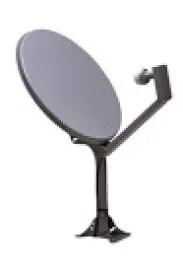In the context of its Digital Single Market (“DSM”) Strategy for the European Union (“EU”), the European Commission (“Commission”) published a proposal for an updated Audiovisual Media Services Directive (“AVMSD” or the “Directive”) on 25 May 2016 (the “Proposal”). In its Communication on the DSM Strategy, the Commission indicated it would review the AVMSD “with a focus on its scope and on the nature of the rules applicable to all market players, in particular measures for the promotion of European works, and the rules on protection of minors and advertising rules.”
Despite a few novelties, the Proposal is generally less far-reaching than expected. Vice President Ansip explained that, to offer the legal certainty companies need in the audiovisual sector, it is necessary to maintain “existing rules that work” while “deregulating where necessary for traditional sectors like broadcasting […] to improve user protection and to reach a level-playing field.”
The Proposal continues to seek to achieve minimum harmonisation, such that Member States may impose stricter rules (e.g., on advertising). Therefore, there is no guarantee that the Commission’s aim to align the regimes applicable to all audiovisual media services and provide more flexibility to TV broadcasters will be fulfilled.
I. Proposed Changes to the Scope of the AVMSD
A.Extension of the material scope of the AVMSD to video-sharing platforms
Since the publication of the AVMSD in 2010, the media landscape has evolved significantly, with rapid technological developments expanding the types of services and experiences. As a result, the Commission decided to go beyond traditional TV broadcasts and on-demand services, and include Video-sharing platforms (“VSP”) within the Directive.
“VSP” services store large amounts of programmes or user-generated videos, for which the VSP does not have editorial responsibility. The inclusion of VSPs within the Directive does not mean that such services will be subject to all of the same requirements as TV broadcasts and on-demand services. As the Commission recognised, “[v]ideo-sharing platforms will be included in the scope of the AVMSD only when it comes to combat hate speech and dissemination of harmful content to minors” (see, below).
Programmes and user-generated videos cover a wide range of services:
-
Programmes: “Programmes” are currently defined as “a set of moving images with or without sound constituting an individual item within a schedule or catalogue established by a media service provider and the form and content of which are comparable to the form and content of television broadcasting” (emphasis added). The Proposal removes the underlined part of the sentence, including additional types of programmes.
-
User-generated videos: This notion is defined by the Proposal as “a set of moving images with or without sound constituting an individual item that is created and/or uploaded to a video-sharing platform by one or more users.” This could arguably encompass illegally obtained or uploaded content and content whose creator is unknown.
VSPs are also characterised by the fact that the provider of the services organises the stored content, potentially automatically or using algorithms (e.g., by hosting, displaying, tagging and sequencing content).
The Proposal recognises that not all websites storing or hosting videos should be a VSP. Occasional posting of videos to websites would fall outside the scope of the Proposal, but standalone parts of websites which feature audiovisual programmes or user-generated videos will be VSPs.
The Commission also addressed social media, as more and more videos are posted on such sites. Social media services would generally not be considered to offer VSP services because they “do not have as a principal purpose the provision of programmes or user-generated videos to the public.” However, depending on the evolution of social media services, they may meet all of the characteristics of VSP.
B.Clarification of the territorial scope of the AVMSD
The AVMSD is based on the “country of origin” principle, whereby AVMS providers need comply with the rules applicable in the Member State in which they are established, not in each EU Member State receiving their services (subject to limited exceptions). However, given that the AVMSD provides minimal harmonisation, the provision of AVMS is more heavily regulated in certain Member States. As a result, the country of origin principle is deemed to have led to “forum shopping” practices where service providers establish themselves in Member States with lighter regulation and provide services in the originally targeted Member States. The Proposal attempts to simplify the rules determining which Member State has jurisdiction and to clarify the derogation mechanisms in cases of exceptions.
First, TV broadcasts and on-demand services only fall within the scope of the AVMSD if their providers are established within one of the EU Member States. The Proposal introduces new rules to facilitate identifying the Member State with jurisdiction. Further, to enhance transparency and cooperation, Member States will be required to identify to the Commission the providers under their jurisdiction.
Second, the Commission tries to address the status of AVMS providers that are not established within the EU but offer services in certain Member States. The country of origin remains applicable to all AVMS. However, the Proposal provides that VSP providers not established in one Member State, but which have either a parent company or a subsidiary that is established in that Member State or which are part of a group and another member of that group is established in that Member State, fall within the scope of the Proposal. This element of the Proposal may raise issues for global conglomerates.
Finally, Article 3 of the Proposal aims to clarify the exceptions to the country of origin principle and improve the derogation mechanisms.
II. Promotion of European works
A. EU quota requirements
Under the current regime, TV broadcasters must reserve “a majority proportion of their transmission time” to European works, while on-demand service must “promote, where practicable and by appropriate means, the production of and access to European works.” The Proposal seeks to reinforce the requirement that on-demand services promote European works by requiring that at least 20% of on-demand service providers’ catalogue is European works.
In addition, the Proposal requires that Member States “ensure prominence of these works”, but without explaining how prominence should be implemented. Some examples of appropriate tools are, however, provided in the Q&A document accompanying the Proposal, including indicating the Member State a film comes from, providing search capabilities for European works, placing information and materials promoting European works on the home/front page, and using trailers or visuals. However, the industry will likely seek more guidance. For example, would creating a specific category within the provider’s catalogue dedicated to European works be sufficient?
B. Financial contributions
The Commission notes that, under the current regime, on-demand service providers tend to establish themselves in jurisdictions with lighter or no financial obligations. The Proposal seeks to increase the financial contribution made by on-demand services to the promotion of European works. Article 13 enables Member States to require on-demand service providers to contribute financially to the production of European works.
The most controversial part of this requirement is that, in spite of the country of origin principle, this possibility is offered not only to the Member State in which a particular service is established, but also to Member States targeted by on-demand service providers (e.g., through targeted advertisements, the main language of the service or the existence of content or commercial communications aimed specifically at this audience). While the Proposal clarifies that Member States must take into account financial contributions made in the Member State of establishment, this rule may impose a significant financial burden.
C. Derogation for small providers
To avoid undermining market development, the Proposal includes a mandatory exemption from the EU quota and financial contribution requirements for companies with a low turnover or audiences, and for small and micro enterprises. In addition, Member States may also waive such obligations “[…] where it would be impracticable or unjustified by reason of the nature or theme of the on-demand audiovisual media services.”
III. Protection against Harmful Content
Protection against violence and hate speech – By slightly modifying Article 6, the Proposal aligns the prohibition of hate speech under the AVMSD with those of the Framework Decision on combating certain forms and expressions of racism and xenophobia which prohibits, inter alia, incitement to “violence or hatred directed against a group of persons or a member of such a group defined by reference to race, colour, religion, descent or national or ethnic origin.”
Protection of minors – The Proposal aligns the protection of minors for TV broadcast and on-demand services, requiring that programmes that “may impair the physical, mental or moral development of minors are only made available in such a way as to ensure that minors will not normally hear or see them.” This increases flexibility for TV broadcasters who cannot make such programmes available today.
The Proposal provides some examples of measures that could be taken to implement this obligation, including selecting the time of broadcast or establishing age verification tools. Stricter measures must be taken for the most harmful content such as gratuitous violence and pornography (e.g., encryption and effective parental control).
Protection against harmful content on video-sharing platforms –VSPs would only be required to implement measures to “protect minors from content which may impair their physical, mental or moral development” and “protect all citizens from content containing incitement to violence or hatred directed against a group of persons or a member of such a group defined by reference to sex, race, colour, religion, descent or national or ethnic origin.” The Proposal lists measures ensuring such protection including, inter alia, (i) defining and applying the concepts of “incitement to violence or hatred” and “harmful to minors” in the terms and conditions of the VSP providers; (ii) creating mechanisms enabling users to report or flag problematic content to VSP providers and enabling providers to explain to users the effect of such action; (iii) creating mechanisms enabling users to rate VSP content; and (iv) creating age verification and parental control systems for content harmful to minors.
Unlike the remainder of the Proposal, the rules concerning VSPs provide for maximum harmonisation. As a result, Member States cannot impose measures that are stricter than those listed in Article 28a. However, Member States would be able to impose stricter measures on illegal content, subject to Articles 14 and 15 of the e-Commerce Directive.
The interaction between the Proposal and the e-Commerce Directive raises interesting issues. As explained here, the Communication on Online Platforms confirmed that the current liability regime set out in the e-Commerce Directive should be maintained. Under Article 14 of the e-Commerce Directive, online intermediaries that provide “hosting” services (i.e., storing information provided by the recipient of the service) are not liable for illegal information that they host (subject to certain conditions). Article 15 prohibits Member States from imposing a general obligation on online intermediaries to monitor the information which they transmit or store or a general obligation to actively identify illegal activity.
Because of the clear link between these two provisions and the proposed rules applicable to VSP, the Commission justifies how this Proposal is consistent with the e-Commerce Directive at some length. In particular, the Commission drew a distinction between the proposed liability of VSPs for the organisation of the content and the liability of online intermediaries (under the e-Commerce Directive) for content as such.
In practice, however, it may be difficult to distinguish between organisation of content, on the one hand, and the content itself. on the other. For example, Article 28a.2.(e) requires VSPs to implement “parental control systems with respect to content which may impair the physical, mental or moral development of minors”. But, to determine whether specific content may be harmful to minors (such that parental controls should be implemented), VSPs will likely have to look at the content itself. Despite the Commission’s attempts to distinguish the two regimes, the Proposal may not provide sufficient legal certainty regarding liability for VSPs.
The Commission proposes that VSPs create codes of conduct that Member States will enforce.
IV. Increased Flexibility for Advertising
Given the possibility for users to switch to services without advertising, the Commission has sought to increase flexibility in the regulation of advertising by TV broadcasters.
Advertising time – While the overall daily limit of 20% of broadcasting time would be maintained between 7 am and 11 pm, the hourly limit (12 minutes per hours) would be abolished, enabling broadcasters to choose when to advertise during the day.
Product placement – The Commission noted that the general prohibition on product placement (with some exceptions) has not provided legal certainty. As a result, it proposes to invert the principle such that product placement is “admissible in all audiovisual media services, except in news and current affairs programmes, consumer affairs programmes, religious programmes and programmes with a significant children’s audience”.
Sponsorship – The Proposal would not substantially change the rules on sponsorships but reiterates the importance of clearly informing viewers of sponsorship agreements.
Strengthened protection of minors from advertising – The Proposal contemplates stricter rules for advertising of foods high in fat, salt/sodium and sugars and alcohol beverages by, where necessary, encouraging codes of conduct at EU level.
V. Stronger Audiovisual Regulators
The Proposal requires each Member State to set up an independent regulator for AVMS that meet the criteria listed in the Proposal. National regulatory authorities would be involved in media pluralism, cultural diversity, consumer protection, the internal market and the promotion of fair competition.
The Proposal also reinforces the role of the European Regulators Group for Audiovisual Media Services (“ERGA”) with a view to increasing cooperation in European audiovisual policy developments. For example, ERGA would assess EU co-regulatory codes and take part in the procedures derogating from the country of origin principle. The Commission will also be able to consult ERGA on jurisdictional matters relating to AVMS and VSPs.






 />i
/>i

